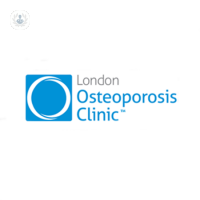Exercises for osteoporosis
Why is exercise for osteoporosis important?
Regular exercise is important for everyone but if you have osteoporosis it is especially important for the prevention of falls and fractures. The right kind of exercise can increase your bone strength and muscle strength, improve your balance and coordination, and improve your overall feeling of health and well-being.
The following exercises have been recommended by the National Osteoporosis Society as beneficial for people with osteoporosis. They include weight-bearing exercises to improve your bone and muscle strength, and balancing exercises. Always consult with your doctor before starting a new type of exercise.

What are some of the best warm-up exercises for people with osteoporosis?
All exercise should begin with a warm-up to help prevent injuries during the exercise session. Suitable warm-up exercises if you have osteoporosis include:
- walking on the spot
- side steps
- stretches like shoulder circles and side bends
Avoid exercises which place stress on the curvature of your spine, such as touching your toes or sit-ups. This is especially important if you have already sustained a compression fracture of the spine.
What are some of the most effective weight-bearing exercises for osteoporosis?
- Exercise classes – there is an ever-increasing range of exercises to try out at your local gym, from aerobics to yoga and pilates. Have a discussion with the instructor before taking part to determine what parts of the class you can or cannot do.
- Weight training – you can do simple weight-training at home with some wall press-ups, or making use of small dumbbells to train your arms. Once you have mastered these exercises, weight training at a gym is a highly effective way to progressively increase your strength, particularly if you are older. It’s important to talk to a personal trainer about what exercises may be suitable for you to get started.
- Running and jogging – a 20-minute jog three times a week can increase bone strength in your hips and your legs. Wearing the correct footwear can help prevent strains or developing problems in your feet. Because this is a high-impact exercise, it may be better to start with one of the exercises mentioned earlier first.
- Sports – volleyball, football, tennis or badminton are all good for bone health but some are more high-impact than others. It is worth consulting with your doctor first before trying out a particular sport.
If your risk of fractures is high or you’ve already had a fracture, the range of exercises that you can do are slightly different:
- Avoid high-impact sports – this includes running or jumping, or contact sports. They can put extra pressure on your spine and possibly lead to compression fractures.
- Focus on strengthening the muscles that support your back – you can strengthen your core muscles by laying face forward on the floor, and lifting your legs, head, or chest off the ground. Maintain your lifted position for a few seconds before returning to the floor again. The aim is to build up to 2-3 sets of 10 repetitions.
- Try aerobic exercises – aerobic classes, walking, and stair-climbing all help to strengthen your lower limbs without placing sudden stress on your spine.
How can people with osteoporosis improve their balance and stability?
You can try out a number of exercises at home to improve your stability, and they take only about 10 minutes a day to practice. Yoga, pilates, and tai chi are increasingly popular forms of exercise which all involve improving your balance and stability. Out of these, tai chi is the easiest and might be the best one to start with.
Finally, it is important to pay attention to your posture, both when sitting and standing, to avoid spinal compression and use your muscles effectively.



